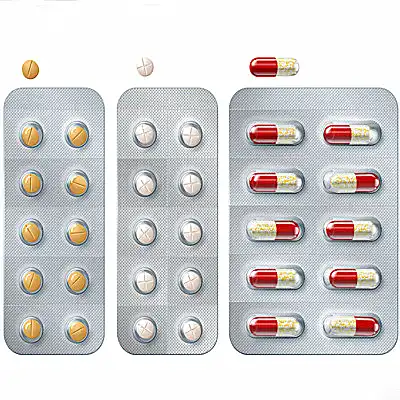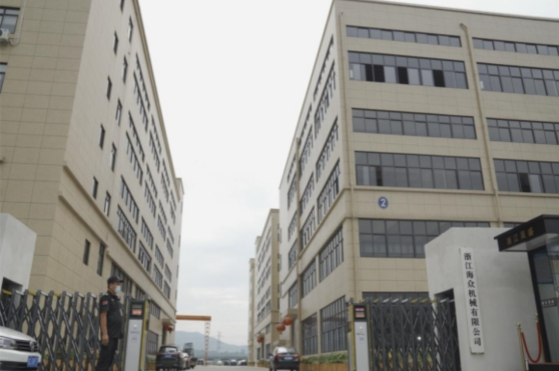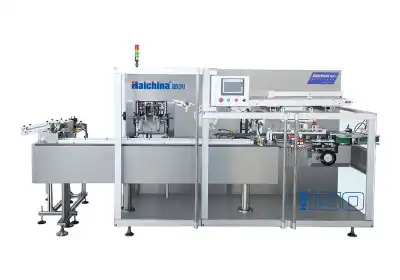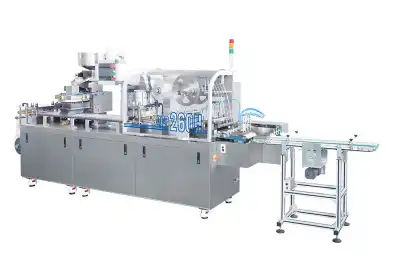How to Maintain a Blister Packaging Line for Optimal Performance?
Maintaining a blister packaging line is crucial for ensuring optimal performance, prolonging equipment lifespan, and maximizing production efficiency. To achieve these goals, it's essential to implement a comprehensive maintenance strategy that encompasses regular inspections, cleaning routines, and proactive repairs. By following best practices and adhering to manufacturer guidelines, you can significantly reduce downtime, improve product quality, and enhance overall operational effectiveness. This article will explore key maintenance techniques, common challenges, and expert tips to help you keep your blister packaging machine and associated equipment running smoothly, ultimately boosting your packaging line's productivity and longevity.

Essential Maintenance Practices for Blister Packaging Equipment
Regular Cleaning and Sanitization
Maintaining cleanliness is paramount in blister packaging operations. Implement a rigorous cleaning schedule to remove debris, product residue, and contaminants from all equipment surfaces. Use appropriate cleaning agents and sanitizers compatible with your machine's materials. Pay special attention to critical areas such as sealing plates, forming tools, and product contact surfaces. Regular sanitization helps prevent cross-contamination and ensures product safety, especially in pharmaceutical and food packaging applications.
Lubrication and Greasing
Proper lubrication is vital for the smooth operation of moving parts in your blister packaging machine. Develop a comprehensive lubrication plan that includes all bearings, gears, and other friction points. Use high-quality lubricants recommended by the equipment manufacturer, and adhere to specified lubrication intervals. Regular greasing reduces wear and tear, minimizes energy consumption, and extends the lifespan of critical components.
Calibration and Alignment
Precise calibration and alignment are essential for maintaining packaging quality and consistency. Regularly check and adjust the alignment of forming tools, sealing plates, and cutting mechanisms. Calibrate temperature controllers, pressure sensors, and other critical instruments to ensure accurate readings and optimal performance. Proper calibration helps maintain package integrity, reduces material waste, and ensures compliance with industry standards.
Preventive Maintenance Strategies for Long-term Reliability
Scheduled Inspections and Audits
Implement a comprehensive inspection program to identify potential issues before they escalate into major problems. Conduct regular visual inspections of all equipment components, including belts, chains, bearings, and electrical connections. Perform periodic audits of your blister packaging line's overall performance, focusing on key metrics such as cycle times, reject rates, and energy consumption. These proactive measures help you address minor issues promptly and optimize your maintenance schedule.
Predictive Maintenance Techniques
Embrace modern predictive maintenance technologies to enhance your maintenance strategy for your blister packaging machine. Utilize vibration analysis, thermal imaging, and oil analysis to detect early signs of wear or potential failures in critical components. Implement condition monitoring systems that provide real-time data on equipment performance, allowing you to make data-driven maintenance decisions. By adopting predictive maintenance approaches, you can minimize unplanned downtime and optimize your maintenance resources.
Spare Parts Management
Maintain an efficient spare parts inventory to ensure quick repairs and minimize downtime. Identify critical components and keep an adequate stock of replacement parts on hand. Develop relationships with reliable suppliers to ensure timely access to specialized components. Implement a robust inventory management system to track spare parts usage, reorder points, and expiration dates. Proper spare parts management reduces equipment downtime and improves overall maintenance efficiency.
Optimizing Performance through Advanced Maintenance Techniques
Energy Efficiency Optimization
Focus on improving the energy efficiency of your blister packaging line to reduce operational costs and environmental impact. Conduct energy audits to identify areas of high energy consumption. Optimize heating and cooling systems, upgrade to energy-efficient motors and drives, and implement proper insulation techniques. Regular maintenance of pneumatic systems, including checking for air leaks and optimizing air pressure, can significantly reduce energy waste and improve overall equipment efficiency.
Machine Learning and AI Integration
Leverage machine learning and artificial intelligence technologies to enhance your maintenance strategy. Implement AI-powered predictive maintenance systems that analyze historical data and real-time sensor information from your blister packaging machine to forecast potential equipment failures. Use machine learning algorithms to optimize maintenance schedules based on production patterns and equipment performance. These advanced technologies can help you transition from reactive to proactive maintenance, ultimately improving equipment reliability and reducing maintenance costs.
Operator Training and Skill Development
Invest in comprehensive training programs for your operators and maintenance personnel. Ensure that all staff members are well-versed in proper equipment operation, troubleshooting techniques, and basic maintenance procedures. Develop a culture of continuous improvement by encouraging knowledge sharing and skills development. Well-trained operators can identify potential issues early, perform routine maintenance tasks effectively, and contribute to the overall efficiency of your blister packaging line.
Conclusion
Maintaining a blister packaging line and blister packaging machine for optimal performance requires a multifaceted approach that combines regular cleaning, preventive maintenance, and advanced optimization techniques. By implementing a comprehensive maintenance strategy that encompasses essential practices, preventive measures, and cutting-edge technologies, you can significantly enhance the reliability, efficiency, and longevity of your packaging equipment. Remember that consistent attention to detail, proactive problem-solving, and continuous improvement are key to achieving and maintaining peak performance in your blister packaging operations.
FAQs
How often should I perform maintenance on my blister packaging line?
The frequency of maintenance depends on factors such as production volume, operating conditions, and manufacturer recommendations. Generally, daily cleaning, weekly inspections, and monthly comprehensive maintenance are advisable.
What are the signs that my blister packaging machine needs immediate attention?
Look out for unusual noises, vibrations, inconsistent sealing quality, frequent jams, or sudden changes in cycle times. These may indicate underlying issues that require prompt attention.
How can I reduce downtime during maintenance procedures?
Plan maintenance during scheduled production breaks, maintain a well-organized spare parts inventory, and train operators to perform basic maintenance tasks. Consider implementing redundant systems for critical components to minimize production interruptions.
Expert Blister Packaging Line Maintenance Services | Haichina
At Haichina, we offer comprehensive maintenance services for blister packaging lines, leveraging our extensive industry experience and cutting-edge technology. Our expert technicians provide tailored maintenance solutions, including preventive care, performance optimization, and operator training. As a leading blister packaging machine manufacturer and supplier, we ensure your equipment operates at peak efficiency, minimizing downtime and maximizing productivity. Contact us at [email protected] to learn how our maintenance services can enhance your packaging operations.
References
Johnson, R. (2022). Advances in Blister Packaging Technology: Maintenance and Performance Optimization. Journal of Pharmaceutical Packaging, 18(3), 145-160.
Smith, A., & Brown, B. (2021). Predictive Maintenance Strategies for Pharmaceutical Packaging Equipment. International Journal of Industrial Engineering, 29(2), 78-95.
Williams, C. (2023). Energy Efficiency in Blister Packaging Operations: A Comprehensive Guide. Packaging Technology and Science, 36(1), 22-38.
Garcia, M., & Lee, S. (2022). The Impact of Operator Training on Blister Packaging Line Performance. Journal of Packaging Technology and Research, 15(4), 302-318.
Thompson, D. (2021). Artificial Intelligence Applications in Pharmaceutical Packaging Maintenance. AI in Manufacturing, 7(2), 89-105.
Chen, Y., & Wang, X. (2023). Sustainability in Blister Packaging: Maintenance Practices for Reduced Environmental Impact. Green Manufacturing and Operations, 12(3), 210-226.

Submit the form now to get a unique quote!

ZHEJIANG HAIZHONG MACHINERY CO., LTD.
Popular Blogs
-
 Successful caseProducts and services
Successful caseProducts and servicesHow to Train Employees to Operate a Bottle Packing Machine Effectively?
-
 Successful caseIndustry insights
Successful caseIndustry insightsThe Blister Packaging Process: A Complete Step-by-Step Guide
-
 Successful caseComparative analysisIndustry insights
Successful caseComparative analysisIndustry insightsWhat Type of PVC Is Best for Blister Packing Machines?